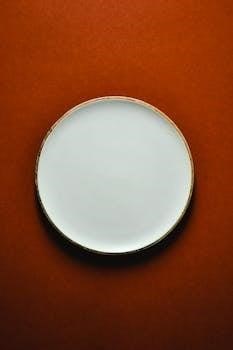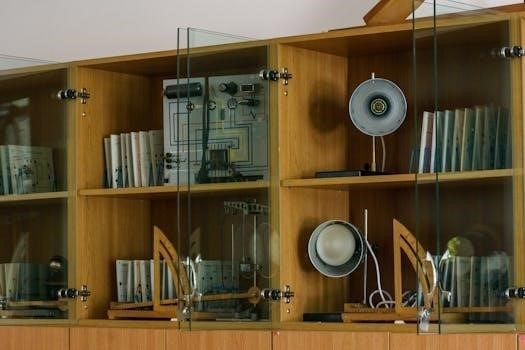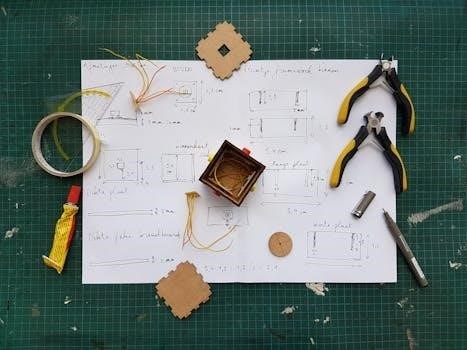A basic hydraulic circuit diagram PDF provides a visual representation of a hydraulic system’s components and their interconnections. These diagrams use standardized symbols to depict elements like pumps, valves, cylinders, and reservoirs. Understanding these diagrams is crucial for troubleshooting and designing hydraulic systems.
Hydraulic circuits are the lifeblood of many industrial and mobile applications, providing the power and control necessary for heavy lifting, precise movements, and automated processes. These circuits use pressurized fluid, typically oil, to transmit force and energy from one point to another. Understanding the fundamentals of hydraulic circuits is essential for anyone working with hydraulic systems, whether you’re a technician, engineer, or designer.
At their core, hydraulic circuits consist of interconnected components that work together to perform a specific task. These components include pumps, which generate the fluid pressure; valves, which control the direction and flow of the fluid; cylinders or motors, which convert the fluid power into mechanical motion; and reservoirs, which store the fluid. The arrangement and interaction of these components determine the circuit’s functionality.
Hydraulic circuits offer several advantages over other power transmission methods, such as mechanical or electrical systems. They can provide high force and torque in a compact size, offer precise control over speed and position, and are relatively simple to design and maintain. However, they also require careful consideration of factors such as fluid viscosity, pressure drop, and component compatibility to ensure optimal performance and reliability.
Understanding Hydraulic Symbols
Hydraulic circuit diagrams rely on a standardized set of symbols to represent the various components within the system. These symbols provide a concise and universally understood language for communicating the circuit’s design and function. Mastering these symbols is crucial for anyone who needs to read, interpret, or create hydraulic schematics.
Each symbol represents a specific hydraulic component, such as a pump, valve, cylinder, or motor. The symbols are designed to be simple and easily recognizable, regardless of the manufacturer or specific model of the component. For example, a pump is typically represented by a circle with an arrow indicating the direction of fluid flow, while a cylinder is represented by a rectangle with a piston symbol inside.
Valves are represented by squares or rectangles with different internal configurations to indicate their function, such as directional control, pressure relief, or flow control. Lines connecting the symbols represent the hydraulic lines or hoses that carry the fluid. Arrows on these lines indicate the direction of fluid flow.
Understanding these symbols allows you to quickly identify the components in a hydraulic circuit and trace the flow of fluid through the system. This knowledge is essential for troubleshooting problems, designing new circuits, and communicating effectively with other hydraulic professionals.
Basic Components in a Hydraulic Circuit
A hydraulic circuit consists of several key components working together to transmit power through fluid. The primary component is the hydraulic pump, which generates fluid flow and pressure. This pump draws fluid from a reservoir, a storage tank that holds the hydraulic fluid. The fluid then flows through a network of hydraulic lines, typically hoses or pipes, to other components.
Valves are essential for controlling the direction, pressure, and flow rate of the fluid. Directional control valves (DCVs) direct fluid to different parts of the circuit, enabling actuators to move in specific directions. Pressure relief valves protect the system from overpressure by diverting excess fluid back to the reservoir. Flow control valves regulate the speed of actuators by controlling the amount of fluid that passes through them.
The fluid’s energy is converted into mechanical work by actuators, such as hydraulic cylinders and motors. Hydraulic cylinders produce linear motion, while hydraulic motors produce rotary motion. These actuators perform the desired tasks, such as lifting, pushing, or rotating loads.
Other important components include filters, which remove contaminants from the fluid, and accumulators, which store hydraulic energy for later use. Understanding the function of each component is crucial for analyzing and troubleshooting hydraulic circuits.
Hydraulic Power Unit Circuit Diagram
A hydraulic power unit (HPU) is the heart of a hydraulic system, providing the necessary pressure and flow to operate various hydraulic components. A hydraulic power unit circuit diagram illustrates how the HPU is configured and how its components interact.
The diagram typically includes a reservoir, which stores the hydraulic fluid. A pump, driven by an electric motor, draws fluid from the reservoir and delivers it to the system. A pressure relief valve is essential for limiting the maximum pressure in the system, preventing damage to components. A filter is included to maintain fluid cleanliness.
The circuit diagram also shows the arrangement of valves, such as directional control valves, which direct the flow of fluid to different parts of the system. A pressure gauge allows monitoring the system pressure. The diagram also includes the piping or tubing that connects the components.
Understanding the HPU circuit diagram is crucial for troubleshooting and maintenance. It helps to identify the location of components and trace the flow of fluid. This allows technicians to diagnose and repair problems efficiently. The diagram also provides valuable information for designing and modifying hydraulic systems.
Directional Control Valve Circuits
Directional control valves (DCVs) are essential components in hydraulic systems, used to control the direction of fluid flow. A directional control valve circuit diagram illustrates how the DCV is connected to other components in the system, such as pumps, actuators, and other valves.
The diagram typically shows the DCV symbol, which indicates the valve’s type, number of ports, and number of positions. The ports are labeled with letters, such as P (pressure), T (tank), A, and B (work ports). The diagram also shows the actuation method, such as manual, solenoid, or pilot-operated.
The circuit diagram illustrates how the DCV directs fluid flow to extend or retract a cylinder, or to operate a hydraulic motor. It shows the position of the valve in different states and the corresponding flow paths. The diagram also includes any necessary check valves or flow control valves.
Understanding the DCV circuit diagram is crucial for troubleshooting and designing hydraulic systems. It helps to identify the correct valve for a specific application and to understand how the valve interacts with other components. This knowledge is essential for diagnosing and repairing problems related to valve operation.
Single-Acting Cylinder Circuit
A single-acting cylinder circuit diagram illustrates a hydraulic system utilizing a single-acting cylinder. Single-acting cylinders exert force in only one direction, typically extending. Retraction is achieved by a spring or external load. The circuit diagram showcases the components required for operation, including a pump, directional control valve, and a reservoir.
The pump supplies hydraulic fluid to the system, while the directional control valve directs the fluid to the cylinder. The diagram clearly depicts the flow path during the extension stroke, where pressurized fluid enters the cylinder, pushing the piston outward.
Upon deactivation of the directional control valve, the fluid is released from the cylinder, and the internal spring forces the piston back to its retracted position. The released fluid returns to the reservoir. The diagram highlights the single connection to the cylinder, distinguishing it from double-acting cylinder circuits.
Understanding the single-acting cylinder circuit diagram is fundamental for comprehending basic hydraulic principles. It aids in troubleshooting simple hydraulic systems and provides a foundation for analyzing more complex circuits. The diagram facilitates the identification of potential issues, such as leaks or valve malfunctions.
Double-Acting Cylinder Circuit
A double-acting cylinder circuit diagram showcases a hydraulic system employing a double-acting cylinder, capable of exerting force in both directions⁚ extension and retraction. Unlike single-acting cylinders, double-acting cylinders utilize hydraulic pressure for both strokes, providing controlled movement in each direction. The circuit diagram illustrates the necessary components, including a pump, a directional control valve, and a reservoir.
The pump delivers hydraulic fluid to the system under pressure. The directional control valve plays a crucial role in directing the fluid to either end of the cylinder, enabling both extension and retraction. The diagram clearly shows two separate lines connecting the valve to the cylinder, one for each direction of movement.
When the valve is activated for extension, pressurized fluid enters the cap end of the cylinder, pushing the piston rod outward. Simultaneously, fluid from the rod end is allowed to flow back to the reservoir. Conversely, when the valve is switched for retraction, pressurized fluid enters the rod end, pulling the piston rod inward, while fluid from the cap end returns to the reservoir.
The double-acting cylinder circuit diagram is a cornerstone of hydraulic system understanding. It aids in diagnosing issues in more complex hydraulic systems and lays the groundwork for further analysis. The diagram enables the easy identification of problems, such as internal leaks or valve failures.
Hydraulic Circuit with Pressure Relief Valve
A hydraulic circuit diagram that includes a pressure relief valve depicts a system designed with built-in overpressure protection. The pressure relief valve is a critical component, acting as a safeguard against excessive pressure buildup within the hydraulic system. This prevents potential damage to components like pumps, cylinders, and valves, and ensures safe operation.
In a standard circuit, a pump delivers hydraulic fluid to the system, powering actuators such as cylinders or motors. However, if the system experiences a surge in pressure, perhaps due to a blockage or an excessive load, the pressure relief valve comes into play. The valve is set to a specific pressure threshold.
When the system pressure exceeds this threshold, the pressure relief valve opens, diverting excess fluid back to the reservoir. This action limits the maximum pressure within the circuit, preventing component failure. The diagram clearly indicates the valve’s location, typically positioned between the pump and the main working components.
The circuit diagram clearly illustrates how the pressure relief valve is integrated into the system, often showing a direct line from the high-pressure side of the pump back to the reservoir. It highlights the importance of this valve in maintaining system integrity and preventing catastrophic failures. Understanding this circuit is vital for hydraulic system maintenance and troubleshooting.

Open Center Hydraulic Circuit
An open center hydraulic circuit diagram illustrates a system where the control valves are configured to allow fluid to flow freely from the pump back to the reservoir when in the neutral or center position. This design characteristic distinguishes it from other circuit types and influences its operational behavior.
In an open center system, the pump continuously delivers fluid, but when no actuators are active, the fluid simply circulates back to the reservoir at low pressure. This reduces the load on the pump and minimizes heat generation when the system is idle. The control valves play a key role in directing fluid to the appropriate actuators when needed.
The circuit diagram clearly shows the arrangement of the valves and the path of the fluid in the neutral position. Typically, the pump is connected to the control valves in series, and each valve has a passage that allows fluid to pass through it when not activated. This creates a continuous loop back to the reservoir.
Open center circuits are commonly used in applications where multiple functions are not required to operate simultaneously and where cost is a major consideration. The simplicity of the design and the ability to use a fixed displacement pump make it an economical choice. However, it’s less efficient when multiple functions are used concurrently due to pressure drops. The diagram highlights these features.
Closed Center Hydraulic Circuit
A closed center hydraulic circuit diagram depicts a system where the control valves block the flow of oil in the neutral position, preventing fluid from returning to the reservoir. This design offers distinct advantages over open center systems, particularly in applications requiring simultaneous operation of multiple functions.

In a closed center circuit, the pump maintains pressure throughout the system, even when no actuators are active. This allows for faster response times when an actuator is engaged, as the pressure is already built up. Variable displacement pumps are often used in these circuits to provide fluid only when needed, improving efficiency.
The circuit diagram illustrates that each control valve has a closed center position, blocking the flow from the pump to the tank. When a valve is actuated, it opens a path for fluid to flow to the corresponding actuator. Since the system is pressurized, the actuator responds immediately.
Closed center circuits are well-suited for applications where precise control and simultaneous operation of multiple actuators are required. They are commonly found in mobile equipment and industrial machinery. The ability to maintain constant pressure and control flow independently to each actuator makes them more efficient in complex systems. The diagram clearly shows these design elements, highlighting the blocked flow paths in neutral.
Tandem Center Hydraulic Circuit
A tandem center hydraulic circuit diagram illustrates a specific type of open center system where the directional control valve has a unique center position. In this configuration, when the valve is in the neutral position, the pump flow is directed back to the reservoir through the valve’s internal passages. This design minimizes energy waste during idle periods.
The key characteristic of a tandem center circuit is that each valve spool is designed with a passage that connects the pump port to the tank port when the spool is centered. This allows the pump to unload, reducing heat generation and power consumption. However, unlike a closed center system, it can’t provide simultaneous operation of multiple functions at full power.
The circuit diagram shows the pump connected to the valve, and when the valve is in the neutral position, the fluid flows directly back to the tank. When a valve is actuated, it blocks the flow to the tank and directs it to the actuator. Tandem center circuits are often used in applications where multiple valves are connected in series.
One advantage of this design is that it allows for prioritizing certain functions. The first valve in the series receives the full pump flow, while subsequent valves receive only the excess flow. This configuration is commonly found in agricultural equipment and other applications where energy efficiency is important. The diagram visualizes this flow path.
Troubleshooting Hydraulic Circuits Using Diagrams
Hydraulic circuit diagrams are invaluable tools for troubleshooting hydraulic system malfunctions. A systematic approach, guided by the diagram, can significantly reduce downtime and ensure accurate repairs. Begin by carefully examining the diagram to understand the normal flow path and the function of each component.
When a problem arises, use the diagram to trace the circuit and identify potential causes. For instance, if a cylinder is not extending, the diagram can help you pinpoint the valves, hoses, or pump sections that could be responsible. Check for pressure drops at various points in the circuit, comparing readings to expected values based on the diagram.
The diagram also aids in identifying the correct test points for pressure gauges and flow meters. By systematically testing each section of the circuit, you can isolate the faulty component. Look for deviations from the normal operating parameters indicated on the diagram, such as excessive pressure, low flow, or unusual temperature.
Moreover, the diagram helps in verifying the proper sequence of operations. If the system is not functioning in the correct order, the diagram can reveal issues with directional control valves or pilot circuits. By comparing the actual system behavior to the diagram, technicians can effectively diagnose and resolve hydraulic system problems, ensuring efficient and reliable operation. Diagrams provide critical context.
Reading and Interpreting Hydraulic Schematics
Reading and interpreting hydraulic schematics is a fundamental skill for anyone working with hydraulic systems. These schematics, also known as circuit diagrams, use standardized symbols to represent hydraulic components and their connections. Understanding these symbols is the first step in deciphering the diagram’s information.
Start by identifying the major components, such as the hydraulic pump, reservoir, valves, and actuators (cylinders or motors). Each component has a specific symbol that indicates its function and type. For example, a circle with an arrow represents a pump, while a rectangle with different configurations indicates a directional control valve.

Next, trace the lines connecting the components. These lines represent hydraulic lines or hoses, indicating the flow path of the fluid. Pay attention to the direction of the arrows on the lines, as they show the direction of fluid flow. Dashed lines typically represent pilot lines or control signals.
Interpreting the schematic also involves understanding the function of each valve and how it controls the flow of fluid. Directional control valves, for instance, can switch the flow path to extend or retract a cylinder. Pressure relief valves protect the system from overpressure by diverting excess flow back to the reservoir.
By carefully examining the symbols, lines, and annotations on the schematic, you can gain a comprehensive understanding of how the hydraulic system operates. This knowledge is essential for troubleshooting, maintenance, and design modifications.

